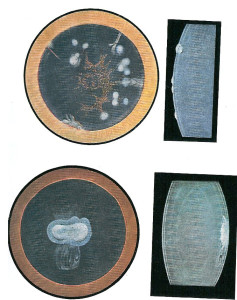The opacity of the lens prevents light rays from reaching the retina and is responsible for a decrease in visual acuity. The only way to improve is to practice vision lens extraction. This procedure is simple and can be conducted in an outpatient setting.
CATARACT OPERATION , THAT THE PATIENT NEEDS TO KNOW
The opacity of the lens prevents light rays from reaching the retina and is responsible for a decrease in visual acuity. The only way to improve is to practice vision lens extraction . This procedure is simple and can be conducted in an outpatient setting.
THE HOSPITAL
Is the same day of operation , fasting ; hospital the day before the operation possible for personal reasons . The output is a few hours after the operation.
LOCAL ANESTHESIA
Local anesthesia is achieved by injection around the eye , or topical anesthetic called by simple instillation of anesthetic drops .
INTERVENTION
The technique is called phacoemulsification OR PHACO , commonly known as laser surgery . After small opening in the cornea opaque crystalline substance was extracted using ultra sounds, while preserving its envelope, to insert a transparent artificial lens , called a lens or implant. Without this implant, the patient can not see well with very thick lenses as magnifiers . Placing a stitch is not necessary if the incision is self-sealing . The total duration of the intervention is thirty minutes, including preparations before and after. It leaves no visible scar. A dressing or a translucent shell is placed on the eye for the rest of the day . The following day the case is no longer appropriate.
THE HOSPITAL STAY
After surgery, the patient is brought into the room. He can stand if desired. It can use the other eye to its sandstone ( reading, watching TV ) .
Ambulatory surgery, the patient returned home a few hours after surgery and will be reviewed in the next consultation .
TREATMENT
Based on instilling eye drops three to six times a day. Usually little or no pain.
RETURN TO HOME
The patient goes home with a means of transportation indifferent , with a stop work two to three weeks. Normal activity can be resumed , do bend the head or body moderately.
RECOVERY OF VISUAL ACUITY is progressive. Made the change of the glass eye is usually done during the consultation the first month. The visual importance of the recovery also depends on the quality of the optic nerve and of the state of the retina .
PRECAUTIONS TO BE TAKEN
This is mainly to avoid rubbing the eye or hurt . Shower and tub are allowed. It is possible to go to the hairdresser , avoiding too hot drying .
The old glasses are worn , unless they interfere too ; then ask your optician to remove the glass and replace it with a neutral glass.
Some tinted glasses are worn if discomfort to light is large . Lower the head is no longer a necessity as time. The resumption of driving will be with the agreement of the ophthalmologist and the final prescription glass.
When to call the doctor? in case of pain . It may be of inflammation or infection (1 in 1000) .
ARE YOU THERE A RELAPSE OF CATARACT ?
No relapse , but the envelope of the lens in which we put the implant may become cloudy secondarily , this envelope called the lens capsule left in place during surgery, can become opaque after a few months or years ; It is this second opacity is treated with laser in one sitting ; treatment about five minutes, completely painless .




